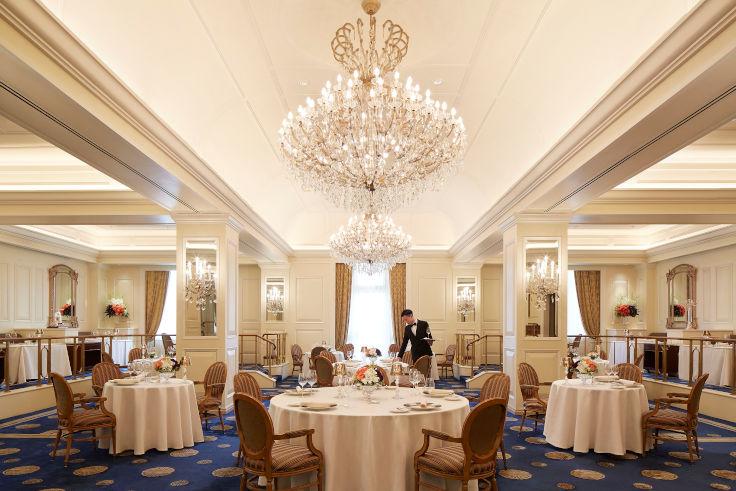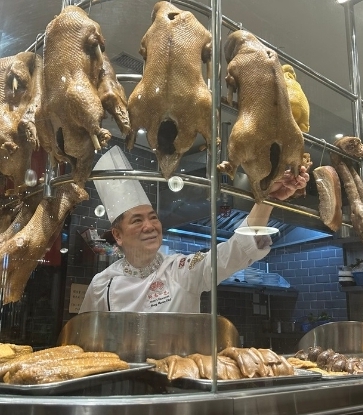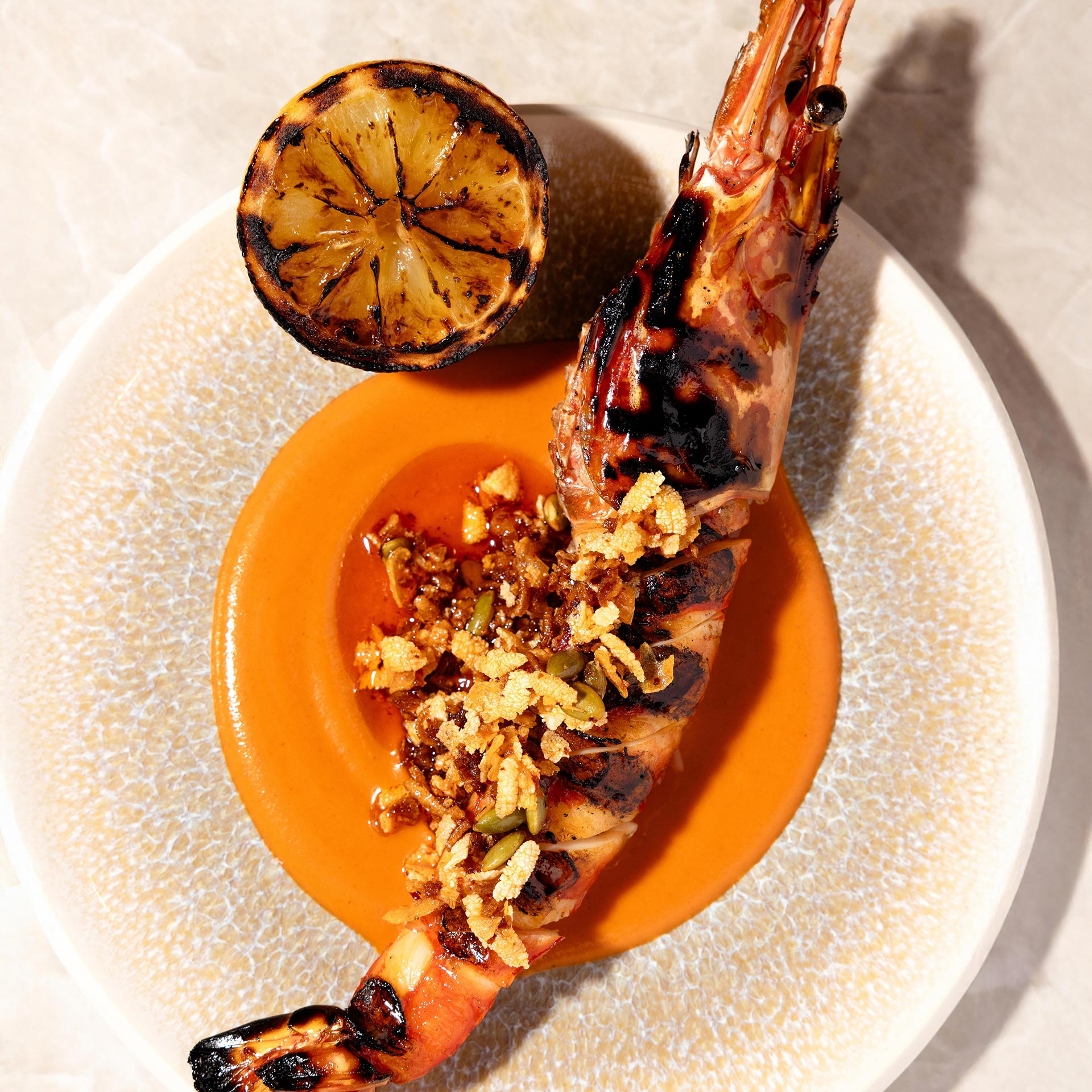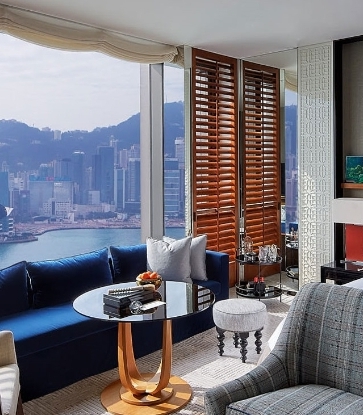To many, French cuisine is synonymous with gourmet food. The history of the cuisine can be traced back to the Middle Ages, when the cuisine was centred around heavily flavoured meat dishes and served in “service en confusion” manner, that is, all dishes being served together. During that period of time, a chef to the French royals, Guillaume Tirel, also known as Taillevent, recorded a series of recipes from the Middle Age period as part of his book "Le Viandier". The book marked the early history of the French cuisine and later became an important reference for the development of the cuisine.
In the 17th century, chef François Pierre La Varenne brought transformation to French cuisine. Instead of dishes with strong tastes, he included recipes that were lighter in flavour with a more modern plating. He included these dishes in his book "Le Cuisinier François", laying the foundation for French haute cuisine. Later, Marie-Antoine Carême, known as the first celebrity chef in history and once cooked for Napoleon, wrote "L'Art de la Cuisine Française", which organized French cuisine systematically, including the categorisation of various French sauces into four mother sauces. La Varenne and Carême have also started a campaign that helped French cuisine shake off the influence of neighbouring countries such as Italy.
By the 20th century, celebrity chef Auguste Escoffier published the well-known "Le Guide Culinaire", which covers recipes, cooking skills and kitchen management. Not only did the seminal title add the fifth mother sauce to Carême’s prior categorisation, it also set up an operation methodology for French kitchens to reform French cuisine. This book is still in print, and is today used as a textbook in culinary schools worldwide.
Thanks to the wisdom of the culinary movement's predecessors, coupled with the establishment of the MICHELIN Guide in 1900 and the rise of gourmet tourism, people around the world were able to understand more about French cuisine, making it one of the most respected and appreciated cuisines in the world.
RECOMMENDED: The 5 Mother Sauces of French Cuisine
With its long heritage and its strong line-up of talent that are considered the leading lights of the culinary world, French cuisine has remained one of the most revered cuisines for gastronomes. In 2010, UNESCO counted French cuisine as one of its "intangible cultural heritage", praising how French cuisine can unite people with food and wine.
With international travel unlikely to happen in the near future, these 5 MICHELIN Guide-featured restaurants will pamper you with exceptional French gourmet food, interior décor and attentive services, allowing customers to enjoy a taste of France without the need to travel afar.

Pierre
Two MICHELIN Stars, MICHELIN Guide Hong Kong Macau 2020
After 14 years of successful tenure in Hong Kong, Pierre, opened by renowned chef Pierre Gagnaire who specializes in modern French cuisine, will be closed for good on July 31. It means the next month will be the last opportunity to savour the unique taste of France co-created by chef Gagnaire and Jacky Tauvry, the chef de cuisine of Pierre.
"For me, the taste of France is about the way a dish is prepared. The skills are important, but the key is to create a complexity of flavours in dishes that look simple,” Tauvry says.
A Brittany native, Tauvry worked in the three-MICHELIN-starred restaurant Pierre Gagnaire in Paris from 2008 to 2012, which allows him to fully understand the core value of Pierre's cuisine and present it here in Hong Kong. "In Pierre, by a combination of seasoning, reduction and concentration of flavours and a mixture of cooking methods, we preserve the tastes of the ingredients in order to create simple dishes with complex flavours," he explains.
Tauvry recommends Haddock Corolla with Salmon Roe as a dish that best represents the taste of France. By pairing common French ingredients such as smoked haddock and artichoke with salmon roe, root celery and celery, the dish's simplicity belies the difficulty in achieving the right balance between the ingredients' contrasting tastes. "By adjusting the quantity and preparation methods of each ingredient, none of the ingredients steal the limelight from another."
With massive full-height windows and stunning central chandeliers, the interior decor of the restaurant allows guests to relax in the comfortable armchairs. Accompanied by a glass of wine selected by the sommelier, diners can enjoy a temporary peace amongst the busyness in the city. This is the French ambience that Pierre hopes to create.

Arbor
Two MICHELIN Stars, MICHELIN Guide Hong Kong Macau 2020
Two years since its opening in Central, Hong Kong, Arbor is well known for using French gastronomy techniques on premium Japanese and Asian ingredients, creating a series of unique and innovative dishes.
The restaurant's head chef Eric Räty believes that French cuisine should reflect fundamental respect for the changing seasons. He pays close attention to the seasonality of the ingredients that he has been updating the restaurant’s menu on a weekly basis to reflect the seasonality. The madeleine served as part of the post-meal petit fours are what Eric believes as the best representation of the taste of France in the entire menu.
"The taste of butter is surely a reminiscent of France," Räty says. He has recently been trying to add sake lees, buckwheat miso and buckwheat honey from Hokkaido to further enhance the taste of his madeleines — another expression of Räty’s innovative take on French cuisine.
Wine pairing has always been an important part of a complete French culinary experience. The restaurant wine director, Sebastien Allano, manages 1,700 bottles of wine in the cellar, many of which were from three French wine regions: Krug Clos d'Ambonnay in the Champagne region, Romanée Conti in Burgundy, and Petrus in Bordeaux. The wine list covers both famous wineries as well as bold and innovative alternatives, which are well worth your discovery.

Gaddi’s
One MICHELIN Star, MICHELIN Guide Hong Kong Macau 2020
"Sauces are the soul of the French cuisine. So a taste of France lies in the sauce of a dish,” according to Albin Gobil, chef de cuisine of Gaddi’s, which has been open at The Peninsula Hong Kong since 1953. "A good sauce determines 50% of the success of a dish."
It is no surprise that in Gaddi’s, Gobil and his team spends a lot of time and effort in the preparation of the sauces. The classic French dish, l’œuf meurette, is a good example.
"Our l’œuf meurette is served with Cevennes onions, grilled octopus, and Alsace bacon. The smooth burgundy red wine sauce is indispensable. To me, this dish is probably the best representation of French cuisine, as it is a very common dish which we created with only ingredients from France. Moreover, the wonderful gravy matches perfectly with high-quality bread and sauce, so how could it be better than this?" says Golbin.
In Gaddi’s, diners are accompanied by live bands playing classical music while they dine. "In French, we call this le charme a la francaise, which means the French charm," Gobil says. The crystal-and-silver chandelier at the centre of the restaurant impresses diners with its reflections and glitters, completing the French gastronomic experience.
“Through various tastes and textures offered by the restaurant, our diners would be able to appreciate the depth and sophistication French cuisine. For me, to be able to introduce France that I know to my customers is the most joyful thing,” Gobil says.

Épure
One MICHELIN Star, MICHELIN Guide Hong Kong Macau 2020
Located in Tsim Sha Tsui, Hong Kong, the interior decor of Épure is inspired by the French palaces. With the golden doors, rose-patterned smoked oak ceilings and hand-painted forest murals, the restaurant is a true expression of the French humble luxury.
For executive chef Nicolas Boutin, the taste of France comes from the entire natural environment, or “terroir” in French, which means a combination of soil, topography and climate.
"Understanding the terroir is very important. Generations after generations, farmers inherited the savoir-faire of adapting to the changing terrior, so long that it becomes a tradition which results in constant high-quality harvests," Boutin says.
Out of Boutin's respect for ingredients, Épure's high-end French cuisine aims to show the authenticity of ingredients. The restaurant's signature dish, Cevennes Onions is a good example. This famous onion comes from southern France and is sweet and juicy. To cook the dish, the chef first cooks the onion as a whole before cutting it open and baking it with sea salt for about 30 minutes until it is caramelised. Lastly, he fills the onion with black truffles from Australia, layer by intricate layer. Despite all the time and effort used for the dish, the sophisticated yet complimentary texture of the dish allows people to appreciate how delicious an onion could be.
Another signature dish of the restaurant is the Mushroom Soup. It uses King Louis XIV's favourite white button mushrooms, which is unique to Paris. Each soup is cooked with a large amount of white mushrooms, with no water and seasonings added at all. Only a small amount of cream is added. Spoon after spoon, the authentic taste of mushroom is the best representation of the deliciousness of French ingredients.

Voyages by Alain Ducasse (Macau)
MICHELIN Plate, MICHELIN Guide Hong Kong Macau 2020
Voyages at the Morpheus Hotel in Macau was founded by the renowned French chef Alain Ducasse. As a French bistro, Voyages offers an immerse experience of the French taste through their classical French dishes with a contemporary approach.
"For me, the taste of France is directly translated to the authenticity of French flavors. One must showcase the integrity of the dish by respecting every process and technique that comes with it," says Safa Rodas, the new head chef of Voyages.
Rodas recommends everyone to try the Roasted French Corn-fed Chicken on the menu as the best representation of the taste of France.
"This is a simple and straight-forward dish made using the French en crapaudine technique, in which we debone the chickens and then roast them with a lot of butter, garlic and herbs. The chickens are from Ducasse’s hometown, Les Landes, and have a very characteristic flavour," Rodas says. "This dish has not changed since our opening. It has become our signature dish and a guest favourite."
The interior decor and artwork of Voyages is a true expression of Ducasse's French aesthetic style. The focal point of the restaurant is an eye-catching octopus painting by Romain Bernini, a Parisian artist who is well-versed with vivid colours. Other paintings that depict different ingredients are creative works by another French artist Léa Maupetit.
"Macau is a haven for gourmands. Although Macau may be halfway across the world from France, this does not stop us from serving authentic flavours. Working closely with our partners, we source the best ingredients to ensure that we only give the diners the quality they deserve," Rodas says.





















